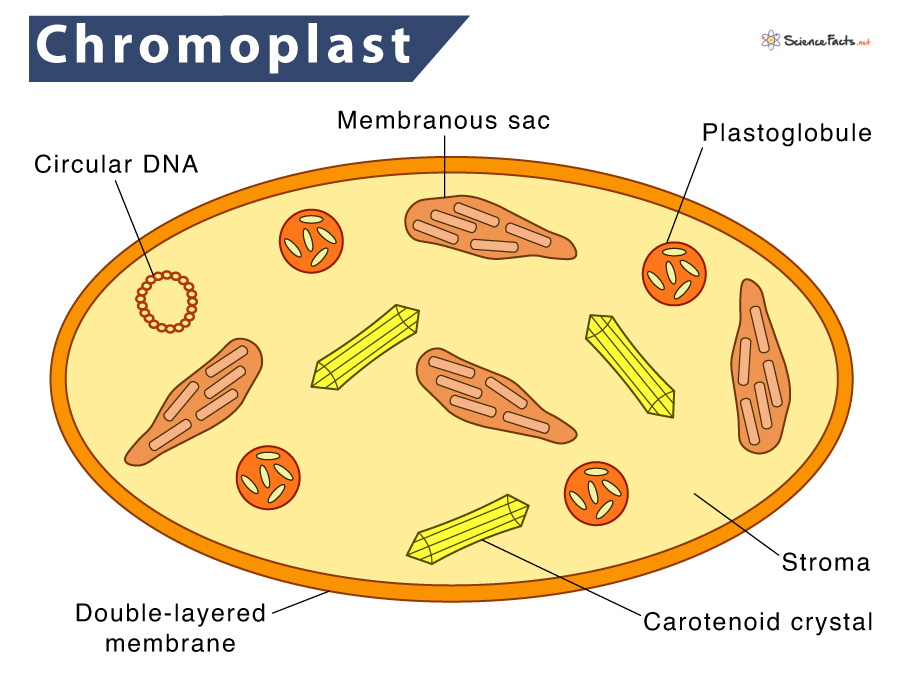In Greek, ‘chroma’ means ‘color’, which gives this plastid its name.
Characteristics of Chromoplast
How are Chromoplast Formed
Structure of Chromoplasts with Types
Redifferentiation of Chromoplasts
Functions of Chromoplasts
Chromoplast vs Chloroplast
Differences between Chloroplast, Chromoplast, and Leucoplast
Degradation of chlorophyll and the thylakoid membraneSignificant increase in carotenoid-accumulating bodies such as plastoglobules, microfibrillar structures, crystalline structures, and membranous structures within the newly formed pigment bodyDNA remains unchanged, but ribosomes and rRNA disappear.The green pigment, chlorophyll, is transformed into the colored chromoplast.
The presence of nutrients, light, and adequate temperature is essential for chromoplast differentiation. Based on the structural differences and the carotenoid-bearing components, chromoplasts are classified into five types as seen under an electron microscope.
1. Globular
They are simple chromoplasts characterized by the presence of lipoprotein particles called plastoglobules bearing carotenoid pigments. They are found in perianth of citrus fruits, capsicum of yellow fruit, and in petals of Ranunculus repens.
2. Membranous
These chromoplasts have carotene pigments in about 20 concentric membranes. They are found in tulips and daffodils and also in the petals of Citrus sinensis.
3. Tubular
In such chromoplast, the carotenoid pigments are typically present in the lipoprotein tubules. Tubular chromoplasts are found in rose, hypanthium, and colored fruits of capsicum.
4. Fibrillar
Here, the carotenoid pigments are present in bundled microfibrillar-shaped chromoplasts. They are found in pepper.
5. Crystalline
As the name suggests, such chromoplasts contain crystals of lycopene and beta-carotene. They are found in carrot roots and tomatoes. This process is characterized by increased chlorophyll content as well reduction in carotenoids. For instance, chromoplasts in carrot roots, citrus fruit, pumpkin, and cucumber lose carotene and develop chlorophyll and thylakoid system again. This redifferentiation is promoted by two plant hormones, gibberellin and nitrates.
Differences
However, they share some common characteristics as well.
Similarities
Contain pigmentsRemains surrounded by two membranesContain identical DNADivide by binary fissionFound in the exposed parts of the plant
